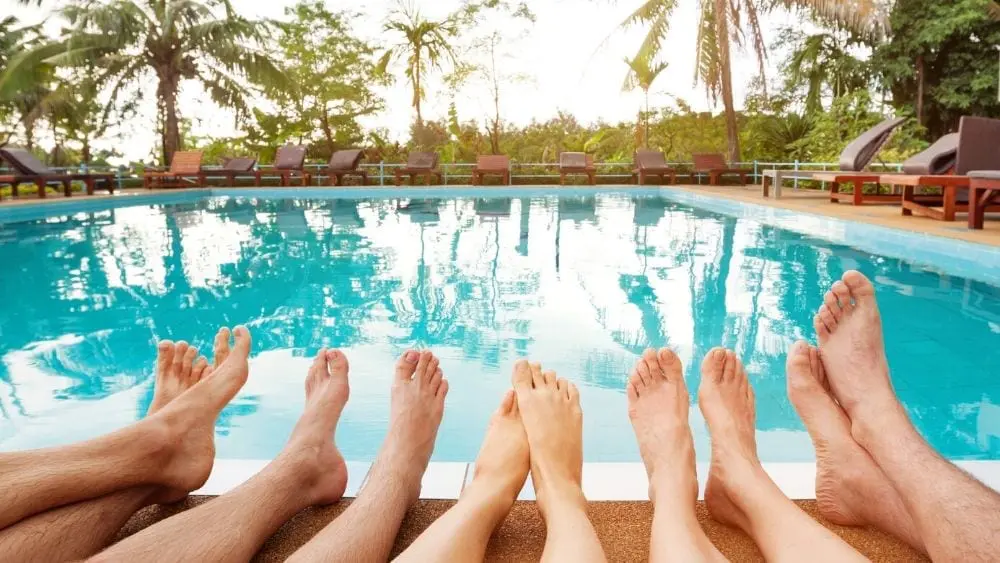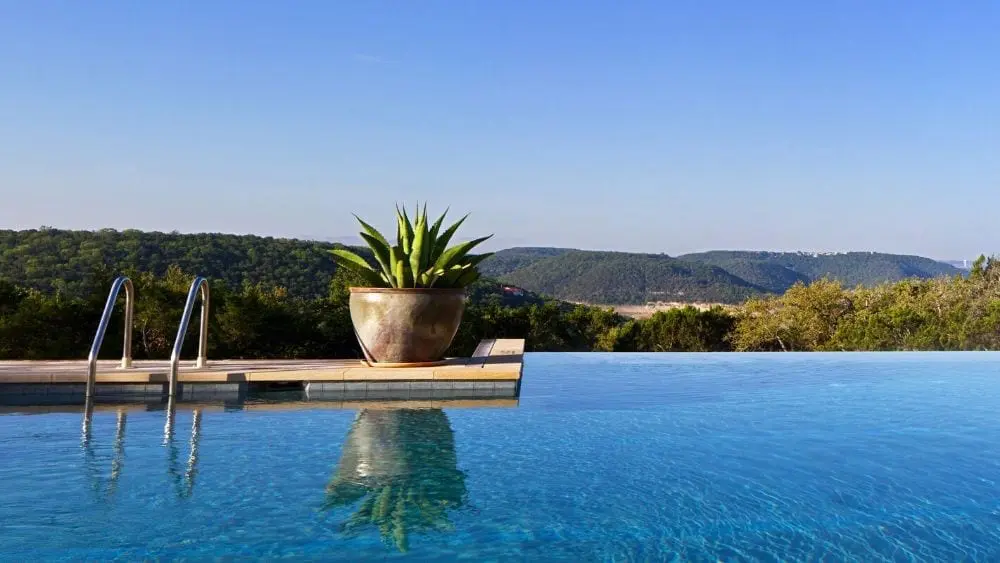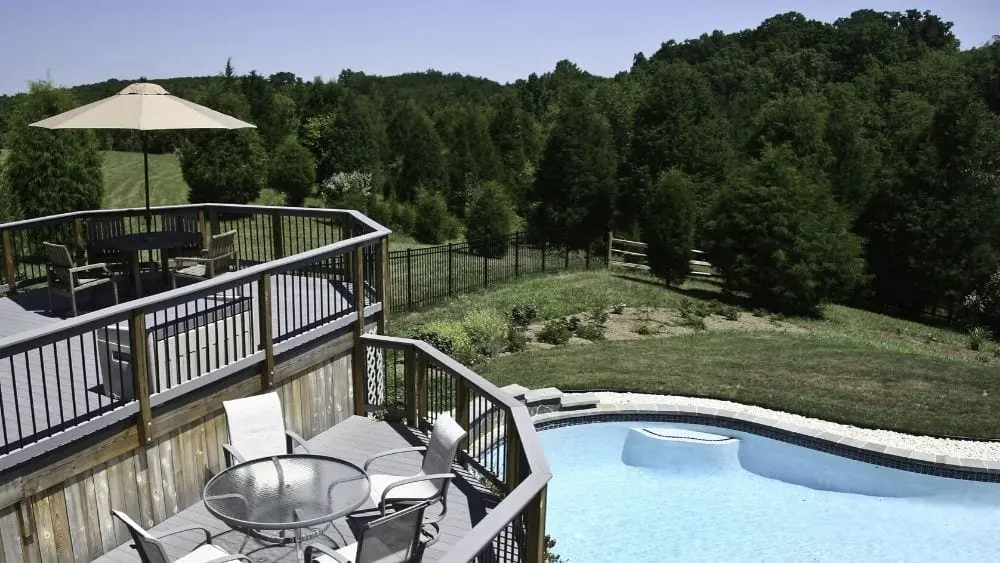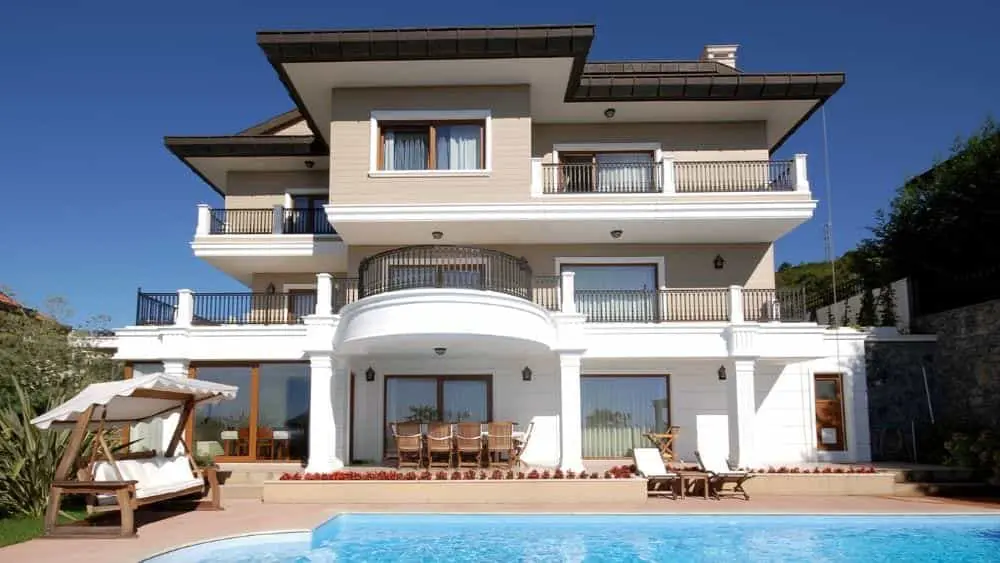
Lounging in your backyard oasis next to the sparkling water of your own private pool is a dream of many homeowners. And perhaps never more so than now, during this period of social distancing and staying at home. Before you take the plunge, here are some things to consider.
The Draw of a Backyard Pool

In days gone by, and in cooler climates, pools weren’t always considered a plus to a home buyer. Would they really use a pool enough to justify its upkeep? But COVID-19 has changed the market mindset considerably, say real estate agents.
“In the past, as a real estate professional, we would say that it is not always a featured added benefit because some folks did not want to maintain a pool, or the additional expense and liability of having one,” says Austin, Texas broker Mary Lynne Gibbs with The Gibbs Team Realty. “Now since the coronavirus pandemic, folks are sheltering in place and many community pools closed. More homeowners are looking to add a pool to their personal residence. The pool installers have seen a huge demand lately. It definitely adds value and most recently we have seen multiple offers on homes with pools.”
Creating a Destination

Rather than spend thousands of dollars traveling to enjoy a resort atmosphere, more homeowners are opting to invest their hard-earned money into creating their own destination. A pool with inviting outdoor living spaces creates a private getaway without the travel hassle, even if you have a small-yard pool options are available to you. “The latest trend we are seeing is buyers looking to move away from densely populated areas, and having a home that is more of a destination,” says Gibbs. “Today’s homeowners want to maintain an active lifestyle and entertainment, yet still have the ability to work from home with a view.”
Climate Considerations

All that said, where you live can factor in to whether a pool makes good financial sense. In hotter regions like the Southwest, a pool can be a year-round playground for your family. “In Texas, outdoor living is hugely important to homeowners because of the fact that we have such mild winters. I truly think having a pool helps make the summers more bearable in our area,” Gibbs adds. “And many people tend to plan vacations deliberately in July to get away from the Texas heat and now folks are staying home and doing home improvement and lounging by their pool instead.”
But, in cold regions like upstate New York, for instance, a pool’s usable days will be severely limited during long, cold winters – unless it is heated indoors. In addition, the costs of operating a heated pool are significantly higher than an outdoor, unheated version. That makes the return on investment a tougher decision for a homeowner.
Weighing the Costs

The cost to install an in-ground pool depends on type of pool, size, and features. Will it have a hot tub, waterfall features or fire bowls? High-tech automated lighting, swim-up bar seating, or walk-in beach style access? The more bells and whistles you add, the higher the costs.
Jon Hutchings, owner of Bikini Pools and Spas (licensed in Los Angeles and Atlanta) said in a recent interview, “I’d say the bare minimum for a pool, assuming that everything’s perfect and you want a really stripped down product, is $50,000, but it usually gets up to $100,000 and beyond.”
In addition to the initial building costs, you’ll also need to budget for a fence (mandatory in most neighborhoods, and by homeowners’ insurance policies). You may have to move landscaping and trees and even reroute utilities. If your new home doesn’t already have gas service, and you want a hot tub or heated pool, you’ll need to factor in the costs of burying a propane tank.
Impact to Your Home’s Values

While adding a pool may be a priceless enhancement to your family and lifestyle, don’t expect to recoup all your costs in added home value. Says Texas real estate appraiser Venecia McKinzie with Southwest Realty, “Regardless of price or size, you aren’t going to get 100 percent back on the cost to install a new pool.”
Two factors that she considers when appraising a pool are the home itself and the neighborhood. “As a rule of thumb, the more expensive the home the more return on the cost to build new,” she says. “Also, if pools are typical to a neighborhood they generate a higher return (of the cost to build new) as typical buyers expect a pool.
“However, on entry level homes where pools may not be common, you get approximately one-third to one-half of the cost to build new,” she adds. “And, if they aren’t typical of the neighborhood at all, you may just recoup one-fourth of the cost to build new in added value to the home.”
A poorly maintained pool or one that is not functioning properly has a detrimental effect on your home’s value, as well. So, if you decide to take the plunge and add your dream pool, commit to keeping it regularly maintained and in good working order. For year-round swimming, plan for around $20 per month in pool chemicals to make this an easy DIY task. Or, hire a weekly pool service; the national average cost is $86 per month.

Freelance writer and marketer Sue Durio has been writing about construction, design and related products for more than 18 years.
 7 Ways To Make a Mudroom Actually Look Good
7 Ways To Make a Mudroom Actually Look Good